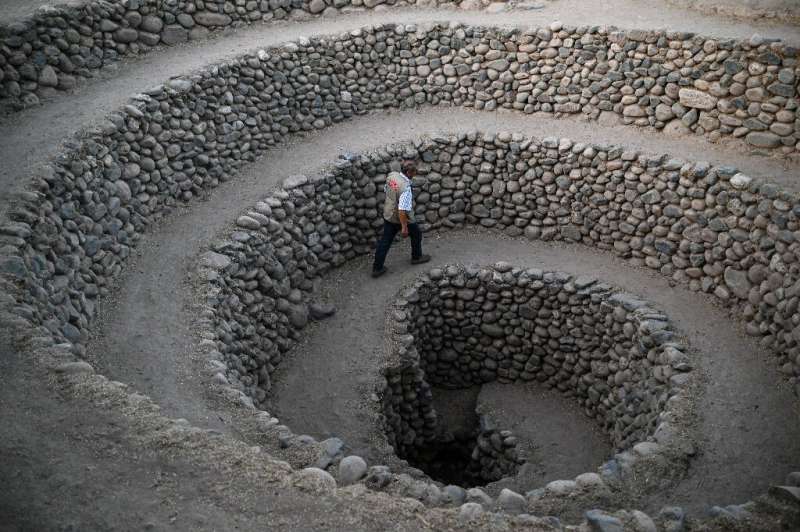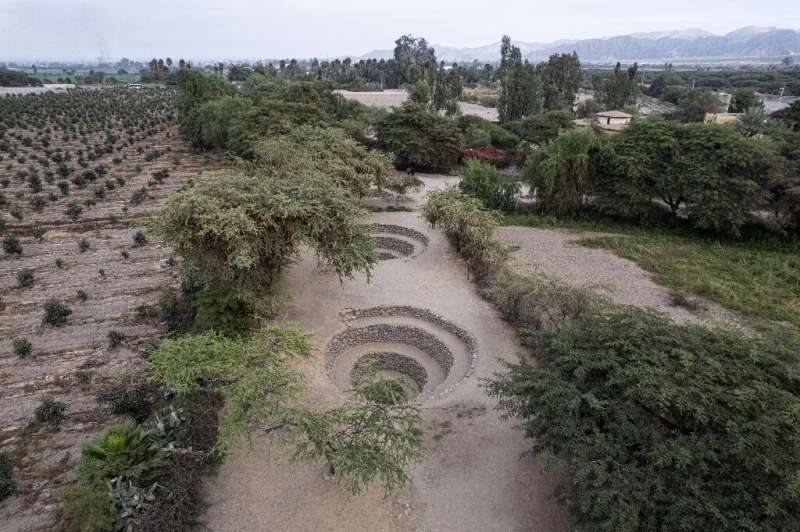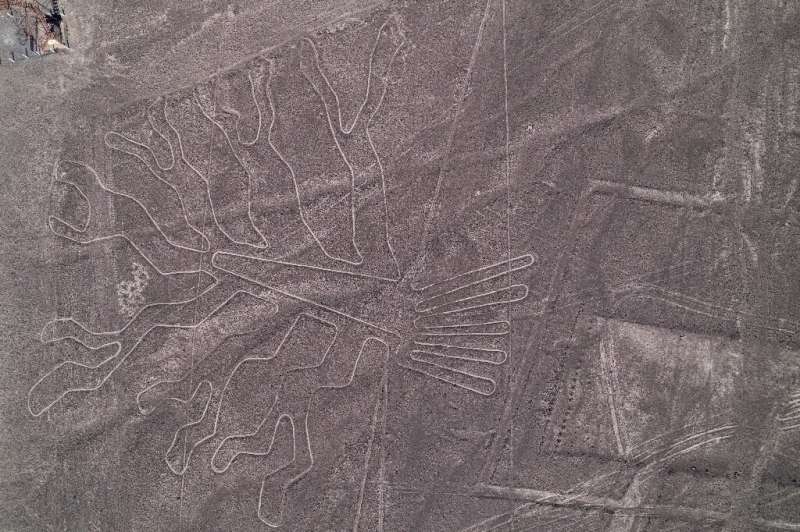Pre-Hispanic aquaducts irrigate modern Peruvian crops

Built some 1,700 years ago by the pre-Hispanic Nazca people of Peru, an ingenious aqueduct system of wood and stone still provides farmers with water to this day.
The complex labyrinth of channels and pits up to 15 meters (49 feet) deep brings critical drinking and irrigation water from faraway mountains and rivers to about 900 subsistence farming families in the Nazca desert in southern Peru.
In an otherwise arid landscape, they grow potatoes, cotton, vegetables and fruit trees.
“It helps us to irrigate,” said farmer Nicolas Quispe, 39, who waters his potatoes from the Nazca aqueduct system “thanks to the ancient farmers who had this advanced technology.”
Families like his pay a yearly fee equivalent to about $32 for the supply.
Often hailed as a marvel of ancient hydraulic engineering, the aqueducts have been submitted by Peru to UNESCO for listing as a cultural heritage.

According to the UN body, until the aqueducts were built, the shortage of water in the Peruvian desert hindered human settlement in an area where rivers are dry for most of the year.
“The inhabitants of the Nasca culture managed to use the water from the underground water table through a technological innovation, formed by underground aqueducts that operated through a system of filtering galleries,” the UNESCO website explains.
“It is a simple system apparently, but at the same time it is sophisticated.”
The system can transport some of 18 to 20 liters of water per second, according to Peruvian authorities.
The aqueducts, 42 in total, are believed to have been built by the same people responsible for Peru’s famous Nazca lines—a series of geometric and animal figures carved into the desert which can only be appreciated from the sky.

The function or meaning of the lines—a World Heritage Site since 1994—remain unclear. Some believe they were for astronomical observation, others that they were part of a calendar.
As for the aqueducts, “we estimate that 29 are still in operation and thanks to this hydraulic system, as you can see, the entire valley is green,” government archaeologist Abdul Yalli told AFP.

“This is a work of art, of architecture and of engineering,” said Jorge Lopez-Doriga, a spokesman for the AJE Group multinational supporting local authorities in the upkeep of the aqueducts.
“These stone channels, which had required the removal of millions of tons of sand to build, continue to function,” he added.
© 2023 AFP
Citation:
Pre-Hispanic aquaducts irrigate modern Peruvian crops (2023, May 24)
retrieved 24 May 2023
from https://phys.org/news/2023-05-pre-hispanic-aquaducts-irrigate-modern-peruvian.html
This document is subject to copyright. Apart from any fair dealing for the purpose of private study or research, no
part may be reproduced without the written permission. The content is provided for information purposes only.
For all the latest Science News Click Here
For the latest news and updates, follow us on Google News.

